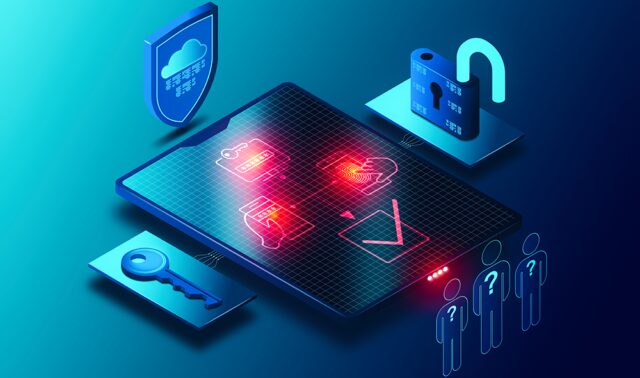In today’s digital age, IT security breaches have become an all-too-common occurrence. Cybercriminals are becoming increasingly sophisticated in their attacks, and businesses of all sizes are vulnerable to these breaches. The consequences of an IT security breach can be severe, ranging from lost data and financial loss to damage to the business’s reputation. To help prevent such incidents, here are the top ten ways to stop an IT security breach.
1. Educate Employees on Cybersecurity Best Practices

One of the most critical steps in preventing an IT security breach is to educate employees on cybersecurity best practices. Failure to do so can lead to devastating consequences. For example, in 2020, a phishing attack targeted a large financial institution’s employees, leading to the theft of over 100 gigabytes of sensitive data. The attackers used a convincing email to trick employees into clicking a link, which then installed malware on their computers.
According to Lumify Learn Australia, there are plenty of online platforms that offer cybersecurity courses so it shouldn’t be a challenge to find one that suits your company’s needs.
2. Implement a Strong Password Policy
Passwords are the first line of defense against cybercriminals, and implementing a strong password policy is essential. Failure to do so can result in password-related attacks, such as brute-force attacks. For example, in 2017, Equifax suffered a massive data breach that exposed the personal information of over 147 million people. The breach was caused by the company’s failure to patch a vulnerability in their systems, but it was exacerbated by the fact that the attackers were able to access sensitive data using a weak password.
3. Use Multi-Factor Authentication

Multi-factor authentication adds an extra layer of security beyond passwords, making it more difficult for cybercriminals to access sensitive data. Failure to use multi-factor authentication can result in unauthorized access to sensitive data. For example, in 2018, a hacker gained access to the personal information of over 29 million Facebook users by exploiting a vulnerability that allowed them to bypass the platform’s multi-factor authentication system.
4. Keep Software and Systems Up-To-Date
Cybercriminals often exploit vulnerabilities in outdated software and systems to gain access to sensitive data. Failure to keep software and systems up-to-date can lead to devastating consequences. For example, in 2017, the WannaCry ransomware attack affected over 200,000 computers worldwide, including those of the UK’s National Health Service (NHS). The attack exploited a vulnerability in outdated Windows systems, which could have been prevented by installing the latest security patches.
5. Use Firewalls and Antivirus Software

Firewalls and antivirus software can help protect against malware and other malicious attacks. Failure to use these tools can result in malware infections, which can cause significant damage to businesses. For example, in 2018, the NotPetya ransomware attack caused over $10 billion in damages worldwide. The attack exploited a vulnerability in outdated software and spread through corporate networks, causing widespread damage.
6. Limit Access to Sensitive Data
Limiting access to sensitive data to only those who need it can help prevent data breaches. Failure to do so can lead to unauthorized access to sensitive data. For example, in 2017, the credit reporting agency Equifax suffered a massive data breach that exposed the personal information of over 147 million people. The breach was caused by the company’s failure to limit access to sensitive data, allowing the attackers to gain access to the information of millions of consumers.
7. Backup Data Regularly

Regular backups of data can help mitigate the damage caused by a cybersecurity breach. Failure to backup data regularly can result in permanent loss of sensitive data. For example, in 2019, the city of Baltimore suffered a ransomware attack that paralyzed the city’s computer systems. The attackers demanded a ransom of $76,000 in Bitcoin to release the encrypted data.
Unfortunately, the city had not backed up its data, and it was unable to recover the lost data. The cost of the attack was estimated to be over $18 million.
8. Monitor Network Activity
Monitoring network activity can help detect potential threats before they become a significant problem. Failure to monitor network activity can result in a delay in detecting a breach, allowing attackers to steal sensitive data. For example, in 2020, the cybersecurity company FireEye discovered that it had been hacked by a nation-state actor. The attackers had been able to access FireEye’s network for several months before being detected, highlighting the importance of monitoring network activity regularly.
9. Have an Incident Response Plan

Having an incident response plan in place can help businesses respond quickly and effectively to a cybersecurity breach. Failure to have an incident response plan can result in confusion and delay in responding to a breach. For example, in 2013, Target suffered a massive data breach that exposed the personal information of over 110 million customers. The company’s response to the breach was criticized for being slow and disorganized, resulting in a significant loss of customer trust.
10. Regularly Test Security Measures
Regularly testing security measures can help identify vulnerabilities and ensure that cybersecurity defenses are working effectively. Failure to test security measures regularly can result in undiscovered vulnerabilities that can be exploited by cybercriminals. For example, in 2019, Capital One suffered a data breach that exposed the personal information of over 100 million customers. The breach was caused by a vulnerability in the company’s firewall that had gone undiscovered for several months.
Conclusion

In conclusion, IT security breaches can have significant consequences for businesses of all sizes. To prevent these breaches, businesses should take steps to educate employees on cybersecurity best practices, implement a strong password policy, use multi-factor authentication, keep software and systems up-to-date, use firewalls and antivirus software, limit access to sensitive data, backup data regularly, monitor network activity, have an incident response plan, and regularly test security measures. Though it might be wise to outsource a lot of these tasks to a managed IT provider if the cost effectiveness of doing so makes sense.
By following these top ten ways to stop an IT security breach and learning from real-world examples of failures, businesses can help protect themselves from cybercriminals and safeguard their sensitive data.









